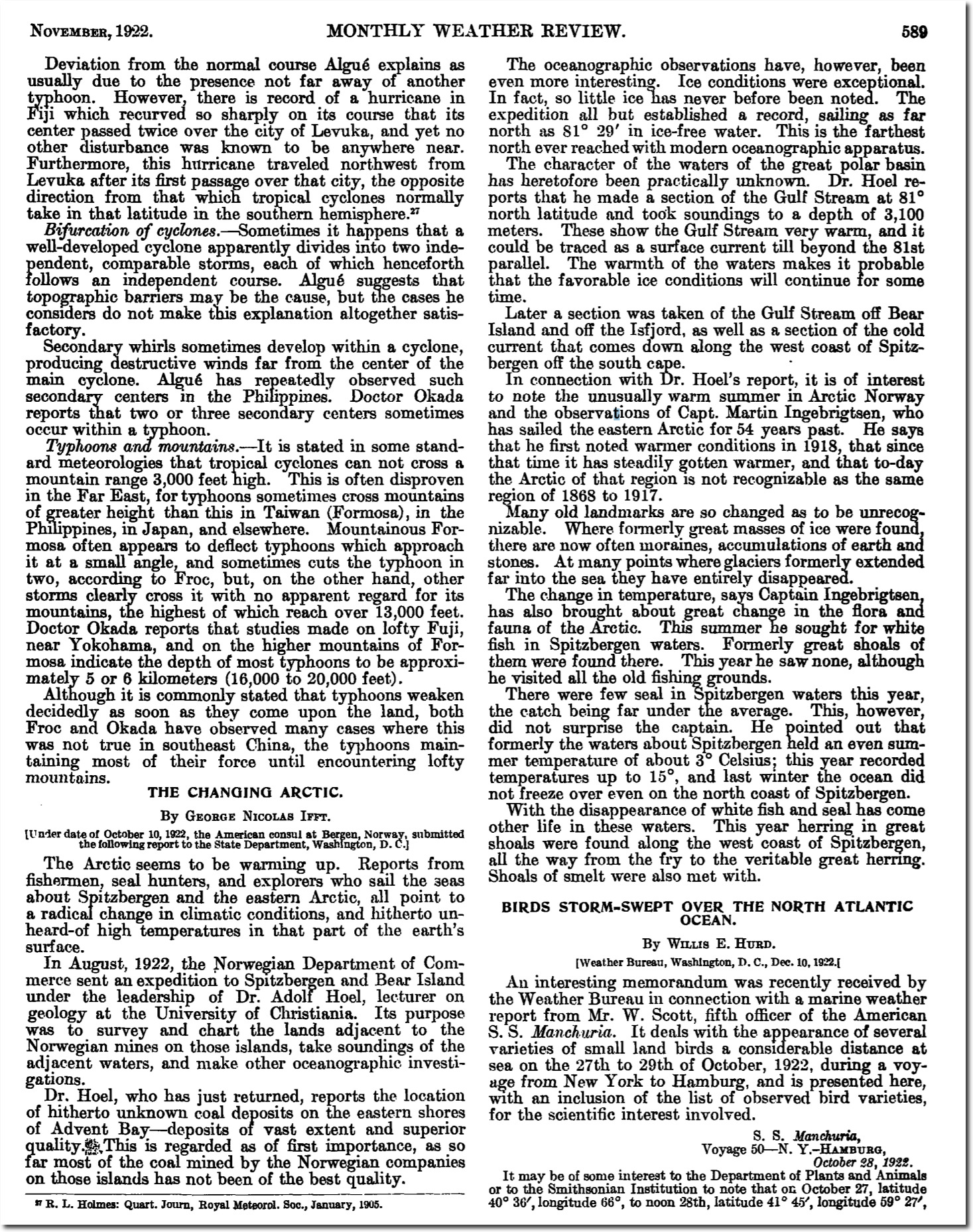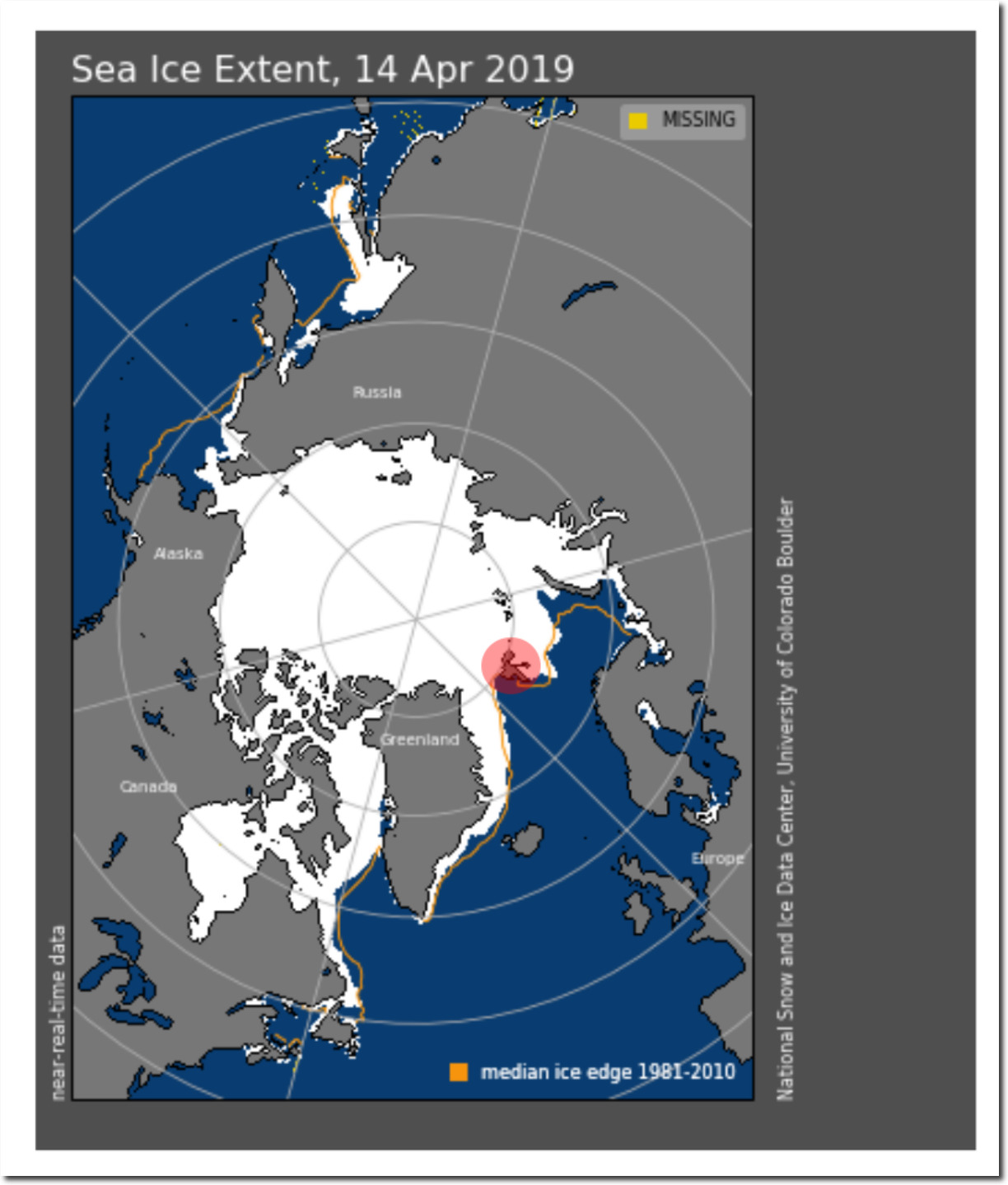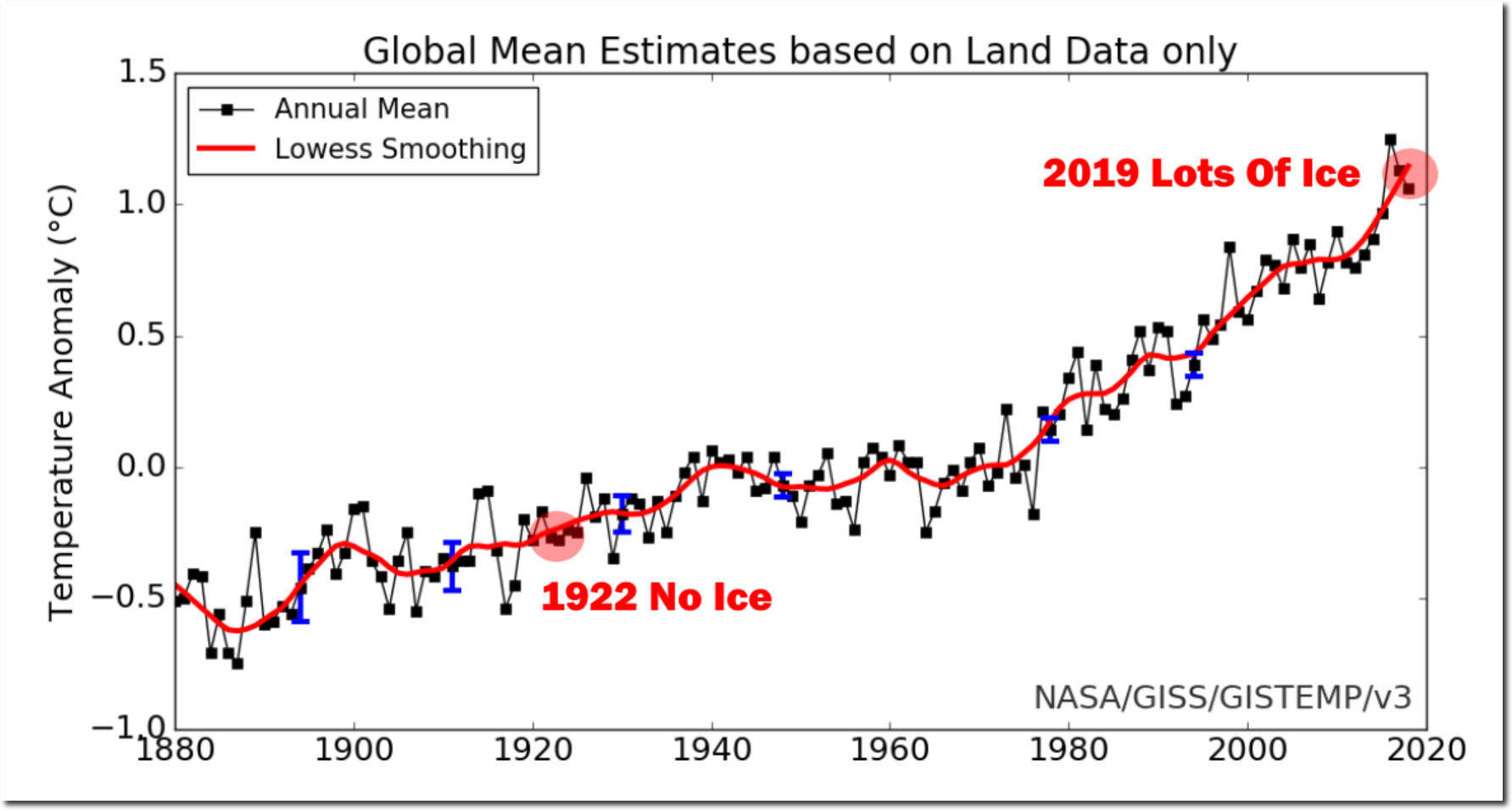NOVEMBER, 1922. MONTHLY WEATHER REVIEW
Reports from fishermen, seal hunters, and explorers who sail the seas about Spitsbergen and the eastern Arctic, all point to a radical change in climatic conditions, and hitherto unheard-of high temperatures in that part of the earth’s surface.
Many old landmarks are so changed as to be unrecognizable. Where formerly great masses of ice were found, there are now often moraines, accumulations of earth and stones. At many points where glaciers formerly extended far into the sea they have entirely disappeared.
formerly the waters about Spitsbergen held an even summer temperature of about 3° Celsius; this year recorded temperatures up to 15°, and last winter the ocean did not freeze over even on the north coast of Spitsbergen.
There wasn’t any ice around Spitsbergen in 1922, but this year there is lots of ice there.
NOAA/G02135/north/daily/images/2019/04_Apr/N_20190414_extn_v3.0.png
NASA apparently believes ice melts when the weather is cold, and forms when the weather is hot.




